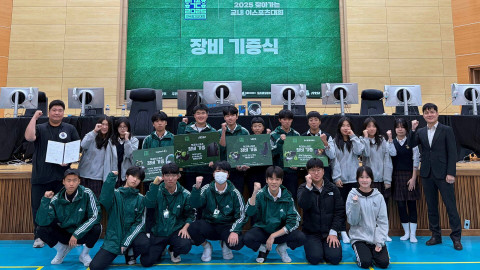
The Battle for Azeroth, as it happens, begins with a rehashing of the classic showdown between the humans and the undead in a struggle for Lordaeron. Teldrassil and its inhabitants have burned to the ground on the Banshee Queen’s orders and Anduin Wrynn, the princeling of the Alliance, is out for vengeance with the likes of Jaina Proudmoore at his back.
If you side with the Horde (as I have) then after a meeting with the Warchief’s right-hand man and a quick port to the Undercity, you find yourself in the thick of the Battle for Lordaeron, fighting your way out of the Magic Quarter and onto the battlefield alongside fellow faction members.
A myriad of Horde leadership directs your regiment’s every move, first sending you deep into Tirisfal Glades and then back behind the city gates before Warchief Sylvanas commands your final retreat, and it becomes abundantly clear that you are not the protagonist of this story. Not this time.
You may be referred to as a champion or hero here and there in lieu of your character’s name, but the battle culminates in a cutscene clash between the expansion's biggest names and the devious, Alliance-turned-Horde carrying out the Dark Lady's bidding. You and the 19 other players you fought alongside are mere footsoldiers, a hoard of insignificant warriors overshadowed by the larger-than-life personalities at the helms of the Horde and the Alliance, and the Battle for Lordaeron was only the beginning.
"...as a result of this forced intimacy with NPCs, players with little interest
in lore suddenly care about contributing to the overall story of Battle for Azeroth,"
At its core, the plot of Battle for Azeroth is nothing new. War of one kind or another drives every World of Warcraft expansion and this one is no different, PvP (player-versus-player) elements aside. Twelve years in, igniting the average player’s passion for the lore that underlies the gameplay is no easy feat, but Battle for Azeroth hits the mark. Its early leveling experience outclasses all recent expansions and sets the stage for the upcoming raid tier.
Through frequent cutscenes, constant dialogue, and distinct voice acting, Blizzard has saturated its newest world with an array of complex, fully personified characters who shove players headfirst into the expansion’s central conflict, and as each new character comes to life, you, the player, fade further into the background, happily playing spectator to the follies of monarchs and assuming the role of asset to the war effort.

Battle for Azeroth’s character-driven storytelling began in pre-release with a series of evocative cinematics featuring the game’s most popular characters. In the expansion’s official trailer, Warchief Sylvanas, the fierce, ruthless, and deeply polarizing queen of the Forsaken who was only recently thrust into the spotlight, met Anduin, the orphaned boy-king players have seen grow into a noble, diplomatic ruler of the Alliance, on the battlefield and their disparate cries of faction allegiance awoke a dormant sense of loyalty in players.
Then, “Warbringers: Jaina” and “Warbringers: Sylvanas” offered a peek into the storied pasts and twisted motivations of Battle for Azeroth’s powerful leaders. In different ways, these cinematics humanized two of World of Warcraft’s longest standing, most recognizable heroes and grounded their in-game decision-making.
And finally, in “Old Soldier,” Varok Saurfang reflected many viewers’ disappointment with the direction Warchief Sylvanas appeared to be taking the Horde, and his own honor and nobility served as a rallying point for players heading into the expansion.
"...it feels as if you, the player, fill a mere supporting role in the stories of
legends like Sylvanas and Jaina,"
These now well-established characters -- Sylvanas, Jaina, Anduin, and Saurfang -- follow players out of their cinematics and into the expansion’s early gameplay. Their whims and commands, pithy comments and dramatic exits (“You’ve won nothing! *banshee scream*”) take center stage, drive initial player engagement, and set the tone for the remainder of the leveling process.
Then, they vanish, leaving behind a representative or two and orders to advance the war effort, and in their stead, a rich new cast of characters is introduced. On the Horde side, players help rescue Princess Talanji and Prophet Zul from the Stormwind Stockades, first receiving wise counsel from a dejected Saurfang before narrowly evading Jaina’s wrath only by the grace of the witch-doctor’s wickedness.

Talanji and Zul are two of three key figures in Zandalar’s story, primary protagonist and antagonist, respectively. This scenario serves not only as a transition from the old world to the new world, but also from old characters to new characters, and its wealth of dialogue and cutscenes quickly colorizes said newcomers.
Talanji’s willful personality is revealed through her unflinching teasing and questioning of Zul, while Zul’s prophetic powers are proven legitimate and his burning of Stormwind, echoing Sylvanas’ deeply controversial burning of Teldrassil, forces players to question, for the first time, whether he is trustworthy. The crew is whisked away to Zandalar shortly thereafter, where they meet King Rastakhan, the third and final key figure. These characters stick with players throughout their time in Zandalar and serve as a constant reminder of the overarching storyline.
The princess directs players to various sources of corruption in the kingdom, as well as leads a daring expedition into Nazmir where she is present for the duration of the main quest chain, and Rastakhan’s redemption arc begins and ends with players by his side. Although Zul immediately betrays his monarchy and becomes an enemy, he is ever-present via the consequences of his actions and his (un)death is not only a major plot point in the leveling experience, but relevant to the upcoming raid, Uldir.
"...the expansion’s novelty and initial storytelling achievements
will easily carry players’ attention into [the first raid tier],"
Talanji, Rastakhan, and Zul are joined by an extensive cast of fun supporting characters who both liven the mood and progress the story. Meerah the Vulpera quickly became a fan favorite for her adorable voice and uninspired lyricism, but Nisha, the spunky, bloodthirsty warrior who comes to players’ rescue in Vol’dun, is not to be overlooked, nor is Wardruid Loti, the Zandalari captain who cannot fathom that that is the “form you choose to walk around in.”
The list goes on and on -- Bladeguard Kaja, Bwonsamdi, Yazma, the entirety of the Tortollan -- and as each new character is introduced, all equipped with a distinct voice, personality, and backstory, Zandalar comes to life. Quest givers are distinct, fleshed-out characters (and oftentimes major protagonists) who talk to, travel with, and fight alongside players, and as a result of this forced intimacy with NPCs, players with little interest in lore suddenly care about contributing to the overall story of Battle for Azeroth.
Convincing the average player to give a crap about the abstract fate of some never-before-seen continent and its never-heard-of boogeyman is a challenge, to say the least -- but convincing players to care about the fate of Princess Talanji and her crumbling empire or the safety of Meerah and her friendly alpacas? That’s easy.

When leveling in Battle for Azeroth, it feels as if you, the player, fill a mere supporting role in the stories of legends like Sylvanas and Jaina; newcomers like Talanji and Rastakhan; and, in the grand scheme of things, nobodies like Meerah, Dot, and Dolly.
By virtue of being the player, you obviously matter (don't worry, we'll all still be credited for the defeat of the final bad guy), but for once, there is no painstaking effort to make you feel special to the story -- no legendary cloak, no supposedly unique artifact weapon; only a piece of Azeroth on a string just like everyone else.
. . .
This time around, Blizzard instead offers a cornucopia of rich, vibrant personalities and plotlines who envelop you, and when combined with shared scenarios and expeditions, it becomes easy to lose yourself in the expansion’s characters, settings, and ongoing war effort.
Character-driven storytelling has always been World of Warcraft’s strong suit, and its return in Battle for Azeroth is both long-awaited and deeply appreciated. Blizzard’s use of voice actors, cutscenes, and cinematics is masterful, successfully coercing players into caring about new characters to a degree that is usually reserved for the Thralls and Jainas of the World.
Players could not have asked for a better leveling experience out of World of Warcraft’s newest iteration, and the expansion’s novelty and early storytelling achievements will easily carry players’ attention into Uldir. But whether or not the end-game content can sustain that interest? That is another matter entirely.
Sort by:
Comments :1
-
0

level 1 ALPHATT
Good article, most of the mainstream reviews didnt really get into this stuff, but its clear while Blizz had to hurry with BfA they put a lot of thought into leveling and the narrative, me and my gf thoroughly enjoyed it.






